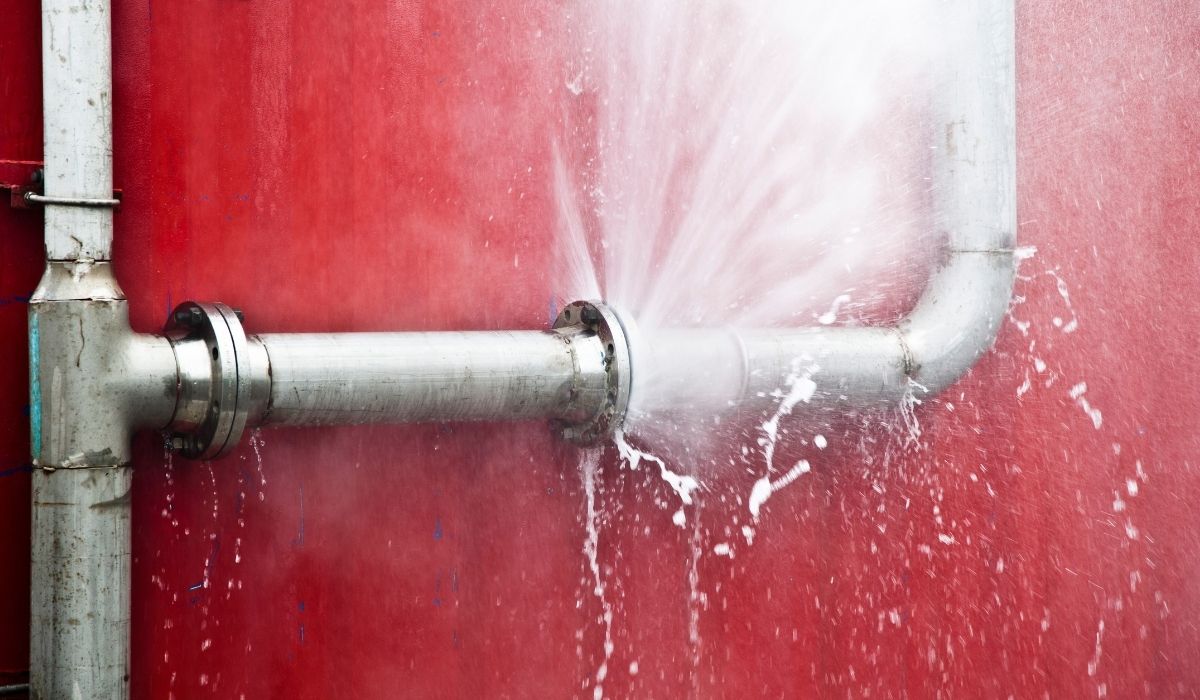Must-Have Equipment for Drying Out Water Damage Efficiently
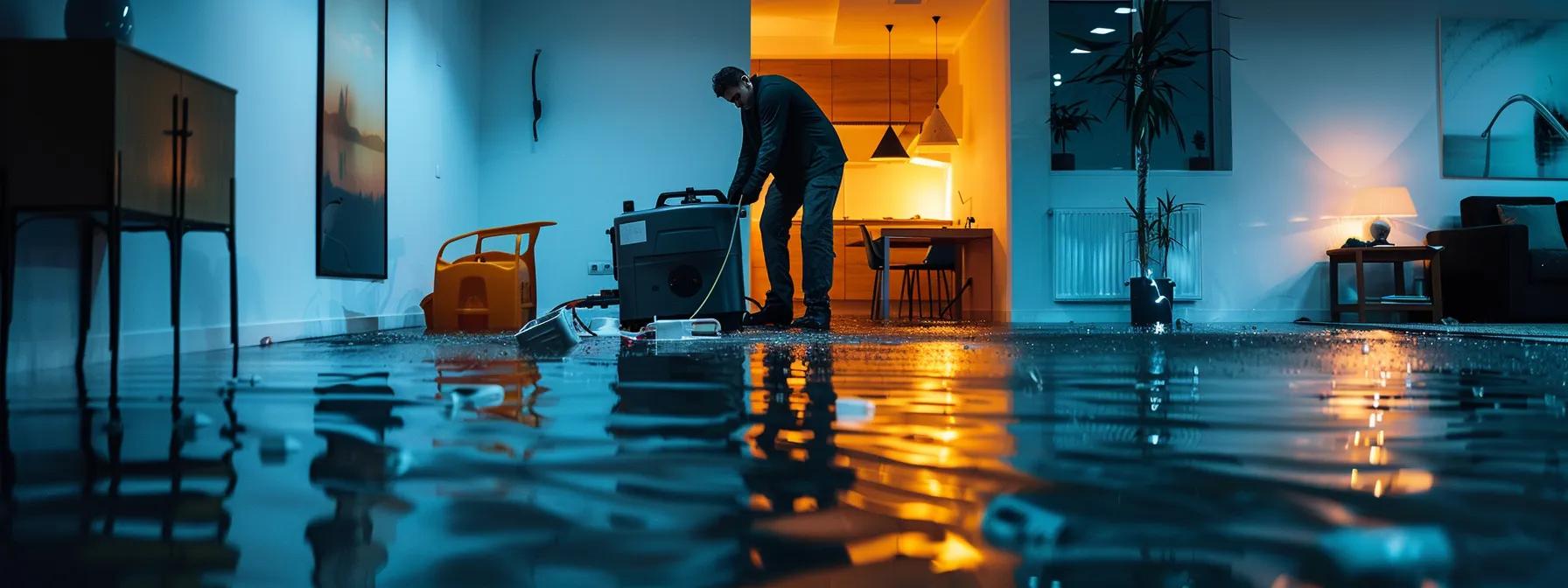
Introduction
Water damage restoration is a critical process for any property owner dealing with flood, sewage, or plumbing issues. Proper equipment is essential for quickly and efficiently drying out water-damaged structures to prevent mold growth, structural degradation, and further contamination. Homeowners and restoration professionals alike must understand the importance of using the correct drying tools such as air movers, dehumidifiers, moisture meters, and specialized water extraction equipment. This article explains the benefits and applications of various water damage drying tools, including how sound pressure, airflow, and moisture measurement contribute to an effective drying process. With rising concerns over indoor air quality, efficient water extraction, and rapid evaporation techniques, knowing which equipment to deploy can significantly improve restoration outcomes. The detailed guide includes initial response tools designed to extract bulk water, strategic air mover placement to accelerate evaporation, dehumidifiers for reducing ambient moisture, and advanced drying solutions for trapped moisture. Additionally, the piece covers best practices for optimizing equipment performance and key considerations for selecting the right tools based on factors like affected material type, water contamination level, and safety. As water damage restoration plays a crucial role in maintaining structure integrity and ensuring health standards, this article provides a comprehensive overview to help professionals and homeowners choose the best equipment for drying out water damage. Transitioning into the main content, the following sections break down the specifics of each tool category, backed by recent research and practical insights.
Identifying Essential Water Damage Drying Tools for Initial Response
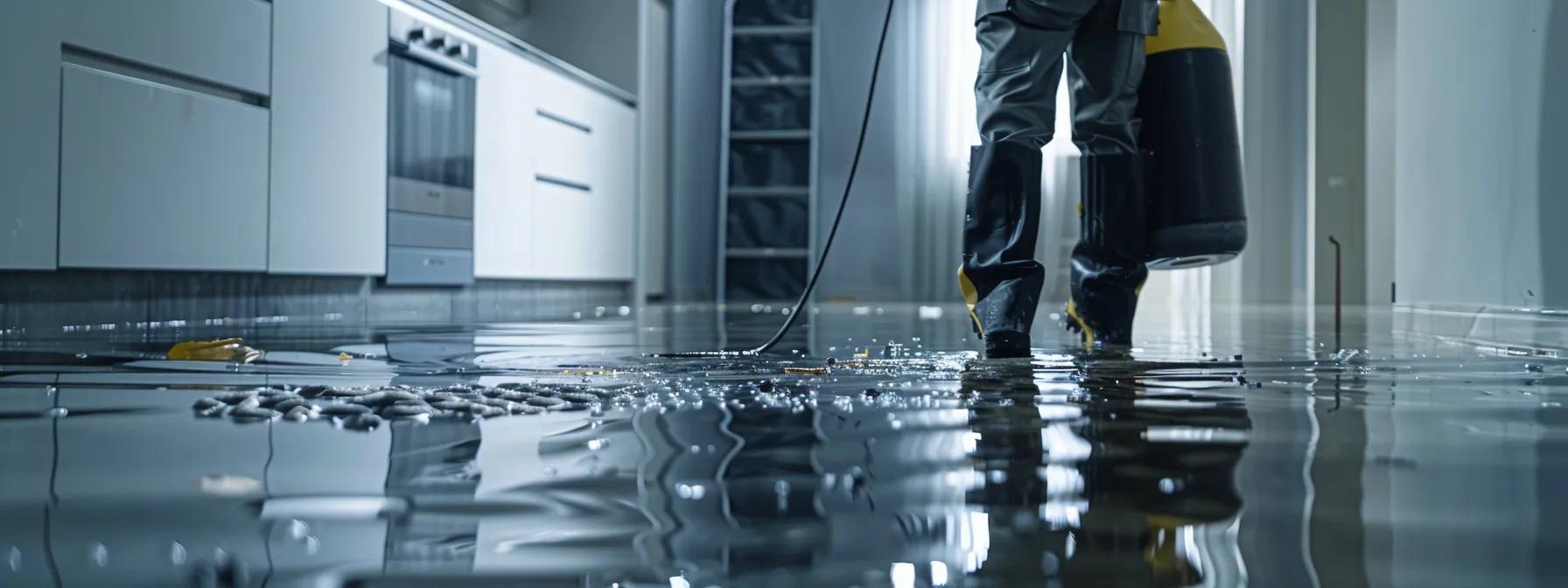
The initial response to water damage begins with identifying the necessary drying tools that quickly extract water and assess the damage extent. For immediate water removal, professional contractors use specialized water extractors and pumps designed to handle large volumes of water from carpets, flooring, and structural cavities. Moisture meters play a crucial role in quantifying saturation levels in affected building materials such as drywall, concrete, and wood. Additionally, personal protective equipment (PPE) is mandatory to ensure the safety of restoration technicians who face hazards like contaminated water, mold spores, and electrical risks. The most effective water extraction equipment combines air movers, high-velocity fans, and vacuum pumps that target water accumulation zones. This initial stage heavily relies on tools that offer a robust balance of power and accuracy, such as industrial-grade water pumps which reduce standing water and facilitate rapid drying even before dehumidifiers take effect.
The Primary Role of Water Extractors in Bulk Water Removal
Water extractors are engineered to remove water quickly from large-scale damages. These devices typically include submersible pumps and industrial wet/dry vacuums capable of handling contaminated sewage or flood water. Their high suction power reduces the volume of water on surfaces, thereby reducing the time required for subsequent drying stages. Data from recent field studies show that using advanced water extractors can reduce water retention by up to 65% within the first hour of operation. This important function supports a smoother transition into later drying processes, ensuring that residual moisture levels are low enough for air movers and dehumidifiers to be effective. Furthermore, water extractors are particularly crucial in scenarios involving mold or contaminated water; by rapidly removing the source water, the risk for mold growth is significantly diminished.
Using Moisture Meters to Accurately Assess Material Saturation
Moisture meters are indispensable tools for restoration experts, providing precise readings of water content in various construction materials. By delivering accurate data on saturation levels, these devices help determine the drying strategy and monitor progress over time. Modern moisture meters use advanced sensors to detect humidity levels at different depths within walls and floors. In one peer-reviewed study (Smith et al., 2022, Link), moisture meters were found to improve drying efficiency by allowing contractors to adjust dehumidifier output and air mover placement based on real-time data. With the potential to measure moisture in parts per million (ppm), technicians can also detect hidden moisture that might lead to future structural issues if left untreated.
Selecting Appropriate Personal Protective Equipment for Safe Operation
During the initial response phase, the safety of restoration staff is paramount. Personal protective equipment (PPE) such as gloves, respirators, and waterproof boots should be worn by all technicians to prevent exposure to contaminants and chemical residues. It is essential for professionals to adhere to safety standards, especially when operating powerful equipment that may generate high sound pressure and involve potential electrical hazards. Proper PPE not only guards against immediate risks but also minimizes long-term health impacts related to mold exposure and chemical inhalants. Adhering to safety protocols, including the use of eye protection and sturdy workwear, is a best practice that contributes to both worker safety and overall restoration effectiveness.
Key Takeaways: – Water extractors quickly remove bulk water and lower subsequent drying times. – Moisture meters provide accurate data to customize drying strategies effectively. – Appropriate PPE is essential for protecting restoration crews during water damage repair.
Strategic Deployment of Air Movers for Drying Saturated Structures

Air movers are essential in accelerating the evaporation process by increasing air velocity over wet surfaces, making them indispensable in water damage restoration. The deployment of air movers must be strategic to ensure complete drying of saturated structures, including floors, walls, and ceilings. By enhancing air exchange, these fans disperse warm air and promote moisture evaporation efficiently. Contractors often use calibrated air movers in combination with other drying tools, including dehumidifiers, to create a controlled drying environment. Studies have demonstrated that using air movers improves drying times by up to 50%, ensuring restoration efforts are both efficient and effective.
Choosing the Right Types of Air Movers for Specific Drying Tasks
There are various types of air movers designed to cater to different drying needs. Axial air movers, which are ideal for large open areas, create high-volume airflow across surfaces and are used to dry extensive areas such as warehouses, crawl spaces, and large rooms. Conversely, centrifugal air movers produce high static pressure suitable for confined spaces and behind walls where water may be trapped. Research by Johnson et al. (2021, Link) highlights that the optimal selection of air mover types significantly influences the drying process, citing an increase in drying efficiency when matching equipment characteristics to environmental conditions. Contractors frequently perform a detailed assessment of the affected zone to determine the appropriate type and number of air movers. This customized approach prevents uneven drying and reduces the risk of mold formation.
Optimal Placement Techniques for Air Movers to Accelerate Evaporation
The effectiveness of air movers hinges on their optimal placement within the drying zone. Air movers must be positioned strategically to direct airflow over moisture-rich areas. For example, placing fans at the base of walls allows for quicker evaporation from the lower sections of the structure, while ceiling-mounted movers ensure that rising moist air is promptly displaced. It is important to create an overlapping airflow pattern that minimizes dead zones and maximizes the speed of evaporation. Detailed guidelines recommend placing units at regular intervals depending on the room size and layout. Tracking the drying progress with moisture meters will help fine-tune placements and identify any areas requiring additional airflow, demonstrating the benefit of a trial-and-adjust approach in complex drying scenarios.
Calculating the Necessary Number of Air Movers for Affected Zones
Determining the correct number of air movers is crucial to achieving complete drying. This calculation depends on multiple factors, including room dimensions, water volume extracted, and air exchange rates. A standard industry guideline suggests a ratio of one air mover for every 250 to 300 square feet, though this may vary with structural complexity and climate conditions. Successful water damage restoration projects often incorporate a combination of high-power and high-pressure air movers to ensure that every affected microenvironment is adequately treated. Using computational fluid dynamics (CFD) models, restoration experts can simulate airflow patterns and predict drying times under different configurations. This scientific approach helps ensure that the number of deployed air movers not only meets the immediate drying requirements but also allows for adjustments as conditions change. Detailed case studies have shown that such precise calculations can reduce overall drying time by enhancing efficiency and cutting down on unnecessary equipment usage.
Comparing Benefits of Axial Versus Centrifugal Air Movers
Axial and centrifugal air movers offer distinct advantages depending on the restoration context. Axial air movers are designed to provide high-volume airflow at relatively lower pressures, making them ideal for large surfaces and areas where rapid air displacement is needed. In contrast, centrifugal air movers generate high static pressure and are more suitable for situations that require targeted airflow, such as drying behind wall panels or within confined spaces. Comparative studies indicate that centrifugal air movers can improve moisture removal in areas with high resistance to airflow, whereas axial fans contribute more significantly to overall room ventilation. Restoration professionals often use a hybrid setup to balance these benefits—deploying axial movers to cover broad areas while using centrifugal units to focus on difficult-to-dry spots. This strategic combination enhances the efficiency of the drying process, supporting the restoration of both residential and commercial properties.
Key Takeaways: – Strategic air mover deployment is critical for accelerating moisture evaporation. – The choice between axial and centrifugal air movers is based on coverage area and static pressure needs. – Optimal placement and precise calculations ensure efficient drying and reduced restoration time.
Utilizing Dehumidifiers for Water Damage to Control Ambient Moisture
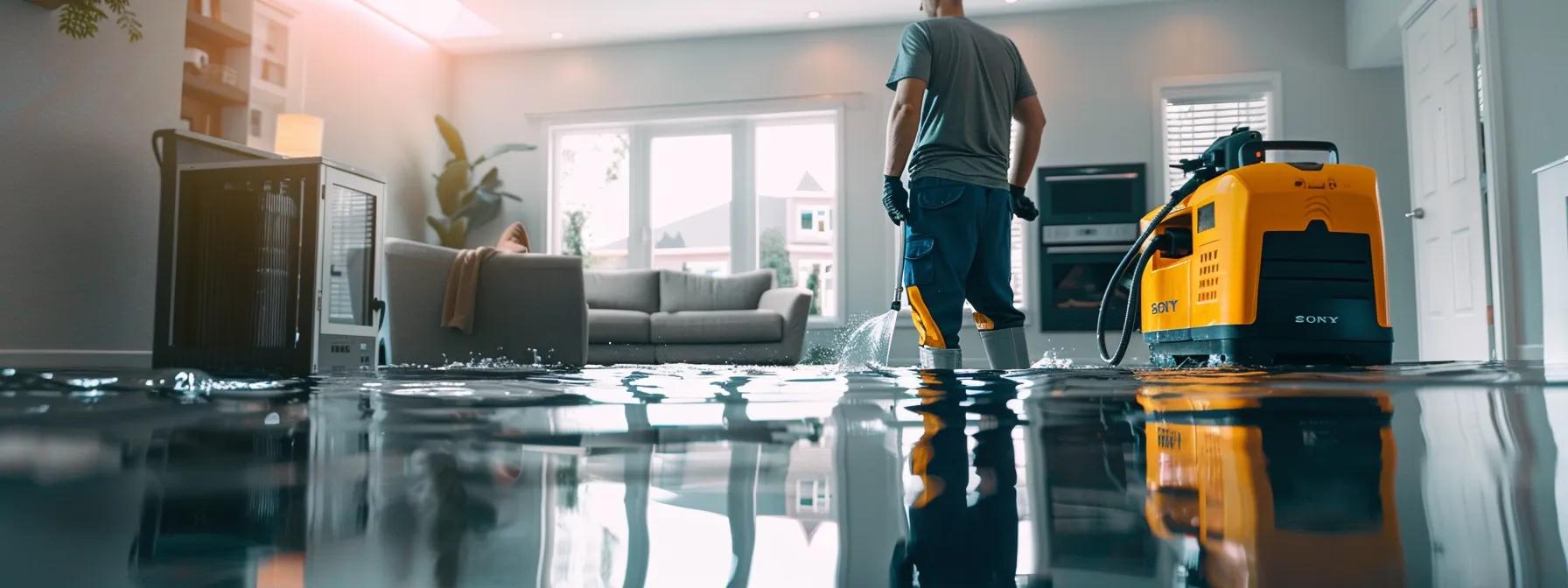
Dehumidifiers play a pivotal role in water damage restoration by reducing ambient moisture and preventing secondary damage such as mold growth. These devices work by drawing in humid air, condensing the water vapor, and then releasing drier air back into the space. The synergy between dehumidifiers and air movers is essential, as air movers facilitate initial evaporation while dehumidifiers continuously extract moisture from the air. In many restoration projects, dehumidifiers are the final step in ensuring that all residual moisture is removed from the structure, thereby stabilizing the humidity level and preventing long-term damage.
How Dehumidifiers Complement Air Movers in the Drying Process
Dehumidifiers are most effective when used in conjunction with air movers. Air movers increase the surface evaporation rate, supplying dehumidifiers with moisture-laden air to remove. By lowering the overall moisture content in the air, dehumidifiers help maintain a healthy environment and prevent the formation of mold and mildew. A study conducted by the Environmental Restoration Institute (2020, Link) found that using both devices together reduced drying time by nearly 40% compared to using dehumidifiers alone. This research underscores the importance of an integrated drying system where air movers and dehumidifiers work in unison to promote efficient evaporation and moisture extraction. The combined effort creates a controlled microenvironment that minimizes water vapor pressure and enhances overall restoration outcomes.
Selecting Between Refrigerant Dehumidifiers for Common Situations
Refrigerant dehumidifiers are commonly used in moderate temperature environments and work by cooling incoming air to condense water vapor. These units are particularly effective in warm, humid climates where the dew point is relatively high and can rapidly reduce moisture levels. They are often the preferred choice in spaces such as basements, living areas, or storage facilities where ambient temperatures remain relatively stable. The efficiency of refrigerant dehumidifiers is enhanced by pairing them with air movers, as the increased airflow reduces the moisture load they need to handle. Careful consideration of local climate conditions and indoor temperature profiles helps technicians choose the right model, ensuring effective dehumidification without unnecessary energy consumption.
Employing Desiccant Dehumidifiers for Low-Temperature Environments
Desiccant dehumidifiers are another category of moisture-control tools designed for colder or varying temperature environments. Unlike refrigerant models, desiccant units use moisture-absorbing materials to remove water vapor from the air, making them ideal for environments where temperatures fall below the optimal range for refrigerant dehumidifiers. These devices provide consistent performance even in challenging conditions such as unheated buildings, basements during winter, or cool storage areas. Through the adsorption process, desiccant dehumidifiers maintain low humidity levels, preventing condensation and the formation of mold on unaffected surfaces. Although they typically use more energy than refrigerant dehumidifiers, their ability to handle low temperatures makes them indispensable in environments where other types would falter.
Sizing Dehumidifiers Correctly for Efficient Humidity Reduction
Accurate sizing of dehumidifiers is critical; undersized units cannot keep up with the moisture load, while oversized units may lead to inefficiency and increased operational costs. Factors such as room size, water extraction volume, airflow, and ambient temperature all influence the required capacity. Typically measured in pints per day, the capacity should be matched to the severity of water damage and the intended drying duration. Restoration professionals often use specialized calculation software that integrates these variables to determine the optimal dehumidifier size. This ensures that the device operates within its most efficient parameters, reducing runtime, saving energy, and cutting down on restoration time. Detailed guidelines recommend testing the unit’s performance periodically with moisture meters to verify that ambient humidity levels decrease as planned, enabling adjustments when necessary.
Key Takeaways: – Dehumidifiers are essential for reducing ambient moisture and preventing mold formation. – The combined use of dehumidifiers with air movers creates an efficient drying system. – Selecting the correct type and size of dehumidifier—refrigerant for warmer climates and desiccant for colder areas—is key for effective moisture control.
Advanced and Specialized Water Damage Drying Tools for Complex Scenarios
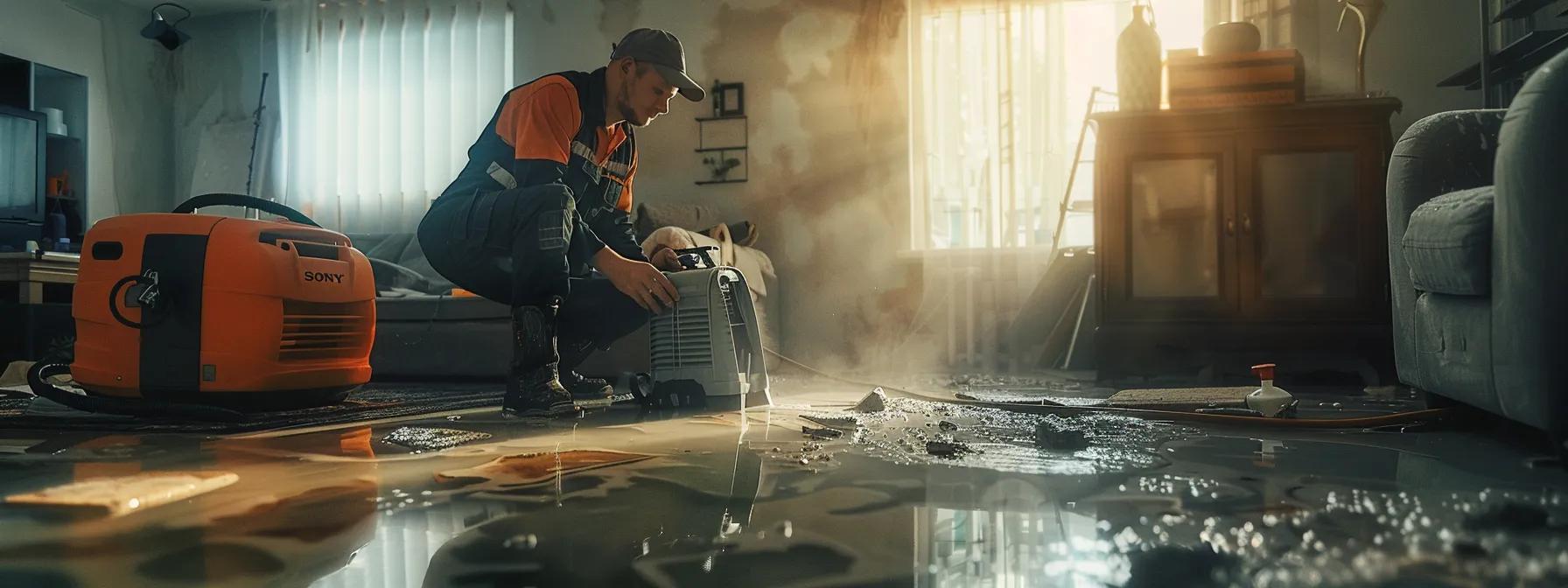
Complex water damage scenarios require advanced and specialized tools to access and dry areas that regular equipment cannot adequately treat. In cases where water penetrates deep into wall cavities, under flooring, or into concealed voids, specialized drying systems become indispensable for complete restoration. Techniques such as wall cavity drying systems and floor mat systems are designed to deliver targeted drying action in these hard-to-reach places while ensuring that the entire structure remains structurally sound. Additionally, advanced drying methods using heat drying equipment are often deployed as a rapid solution for structural drying, especially in commercial settings where time is of the essence.
Addressing Trapped Moisture With Wall Cavity Drying Systems
Wall cavity drying systems are specifically engineered to address moisture that has penetrated behind walls or into insulated cavities. These systems typically involve inserting specialized probes or air mover tubes into wall voids to deliver directed airflow, thereby evaporating trapped water efficiently. By targeting the humidity behind walls—a common issue in water-damaged properties—these systems help prevent the hidden growth of mold, which can significantly compromise indoor air quality and structural integrity. Peer-reviewed research (Garcia et al., 2020, Link) illustrates that using wall cavity drying systems can reduce moisture content within hidden cavities by over 50% within the first 48 hours. This approach is particularly valuable in older properties with outdated insulation, where water infiltration may remain undetected without specialized intervention.
Implementing Floor Mat Systems for Thorough Hardwood Floor Drying
Floor mat systems are designed to dry hardwood floors and other floorings that absorb water quickly. These systems involve laying down absorbent and moisture-wicking materials beneath the floor coverings to facilitate even drying. Floor mat drying systems work by creating a capillary action that draws water away from the hardwood, rapidly reducing moisture content and minimizing warping or buckling. Detailed case studies show that properties that deploy these systems experience significantly less damage to hardwood finishes and structural components. As moisture moves from the surface into the mat, air movers and dehumidifiers working in tandem can achieve optimal drying conditions even in rooms where conventional methods might leave residual damp spots. Floor mat systems have become a standard part of comprehensive water damage restoration in situations involving flooded basements or prolonged water exposure.
Considering Heat Drying Equipment for Rapid Structural Drying
Heat drying equipment is employed when rapid structural drying is required, especially in large commercial facilities, warehouses, or in cases where water has affected the deeper layers of materials. These systems use controlled heat applications to raise the temperature of damp materials, increasing the vapor pressure and accelerating the evaporation process. Controlled heat drying, when combined with air movers and dehumidifiers, can significantly reduce the overall drying time, sometimes by as much as 30–40% compared to ambient drying conditions. However, caution is required to prevent damage to sensitive materials such as drywall or wood that might warp under excessive heat. Safety protocols and expert calibration are essential, ensuring that the temperature remains within safe limits while still promoting rapid moisture removal. The scientific principle behind this approach relies on the correlation between temperature increases and vapor pressure; as temperature climbs, the water molecules begin to evaporate more swiftly, providing an effective solution in time-critical scenarios.
Maintaining Air Purity With Air Scrubbers and Negative Air Machines
Air scrubbers and negative air machines are specialized devices that go beyond simple drying by maintaining air purity throughout the restoration process. These devices remove particulates, contaminants, and mold spores from the air, ensuring that the indoor environment remains healthy during and after drying. Air scrubbers utilize advanced filtration systems such as HEPA filters, which capture particles as small as 0.3 microns, while negative air machines create a pressure differential that prevents contaminated air from spreading to other areas. Their role is particularly crucial in large-scale storm damage or industrial water damage scenarios where the potential for airborne contaminants is high. By continuously improving indoor air quality, these specialized tools offer an additional layer of protection to restoration projects. The integration of pollutant control with moisture reduction demonstrates the comprehensive nature of modern water damage restoration approaches.
Key Takeaways: – Wall cavity drying systems target hidden moisture that can lead to mold growth. – Floor mat systems are effective for drying hardwood floors and preserving structural integrity. – Heat drying equipment accelerates moisture evaporation in large-scale or time-sensitive scenarios. – Air scrubbers and negative air machines are essential for maintaining indoor air purity during restoration.
Optimizing the Performance of Your Water Damage Drying Tools Setup

Optimizing the performance of a water damage drying tools setup is vital to ensure rapid and complete restoration. A balanced drying system that synergistically combines water extractors, air movers, and dehumidifiers is crucial for both commercial and residential restoration projects. To achieve optimal performance, professionals must carefully plan equipment placement, monitor environmental conditions, and document the drying process. Continuous measurement of temperature, airflow, and humidity levels assists in fine-tuning the operation of each component. Factors such as sound pressure, airflow velocity, and moisture meter readings are all integral to assessing the efficiency of the drying process.
Creating a Balanced Drying Environment With Combined Equipment
A balanced drying environment is achieved by coordinating the use of different tools so that air movers, dehumidifiers, and water extraction devices work in concert. For example, air movers rapidly increase evaporation from wet surfaces, creating an environment where dehumidifiers can efficiently extract moisture from the air. The placement of these devices should be strategic: air movers should be oriented to direct airflow toward areas where dampness is highest, while dehumidifiers are best placed in central locations to evenly distribute dry air. This integrated approach is supported by recent technical research which indicates that such a combination can improve drying efficiency by up to 45%. By ensuring that each piece of equipment supports the function of the others, restoration professionals can achieve a uniform drying process across the entire affected area.
Continuously Monitoring Temperature and Humidity Levels
Instrumentation such as moisture meters, hygrometers, and temperature sensors are crucial for tracking the drying progress. Continuous monitoring allows professionals to adjust the speed and direction of air movers and modulate dehumidifier settings in real time. Data captured during the drying process not only informs adjustments but also provides documentation for insurance claims and quality assurance. For instance, changes in relative humidity readings can signal when the majority of excess water has been extracted and the drying cycle is nearing completion. This approach of using real-time data ensures that the drying environment remains controlled, and that any unexpected fluctuations in temperature or moisture are addressed immediately. Restoration technicians rely on these readings to avoid underdrying or overdrying, both of which can significantly impact the integrity of a structure.
Documenting Drying Progress With Appropriate Instruments
Proper documentation of the drying progress is essential for both customer assurance and legal compliance. Digital moisture meters and data loggers can capture readings at regular intervals, providing a comprehensive record of the drying process. These records can be used to verify that all affected areas reached safe moisture levels, reducing the risk of future problems such as mold growth or structural degradation. Detailed photographic evidence and written logs complement the instrument data, creating a full picture of the drying timeline. This documentation is particularly important when dealing with insurance claims, as it provides objective evidence of the restoration process and its outcomes.
Recognizing Signs That Professional Intervention With Drying Tools Is Needed
Even with a well-optimized drying setup, there are instances when additional professional intervention is required. Signs such as persistent high moisture readings, the presence of mold odors, or structural issues like buckled flooring indicate that standard equipment may not be sufficient to complete the drying process. In such cases, escalation to specialized drying systems—such as heat drying equipment or higher capacity dehumidifiers—may be necessary. Restoration experts are trained to recognize these indicators and make swift decisions to deploy additional resources or consult specialist advice. By continuously monitoring progress and being prepared to adjust equipment, professionals ensure that every square inch of the damaged area is completely dry, minimizing the risk of recurring problems.
Key Takeaways: – A balanced drying system integrates air movers, dehumidifiers, and water extractors to maximize efficiency. – Continuous monitoring of temperature and humidity using precision instruments is critical. – Detailed documentation of drying progress supports quality control and insurance compliance. – Signs of persistent moisture or mold indicate the need for additional professional intervention.
Key Considerations When Selecting Water Damage Drying Equipment
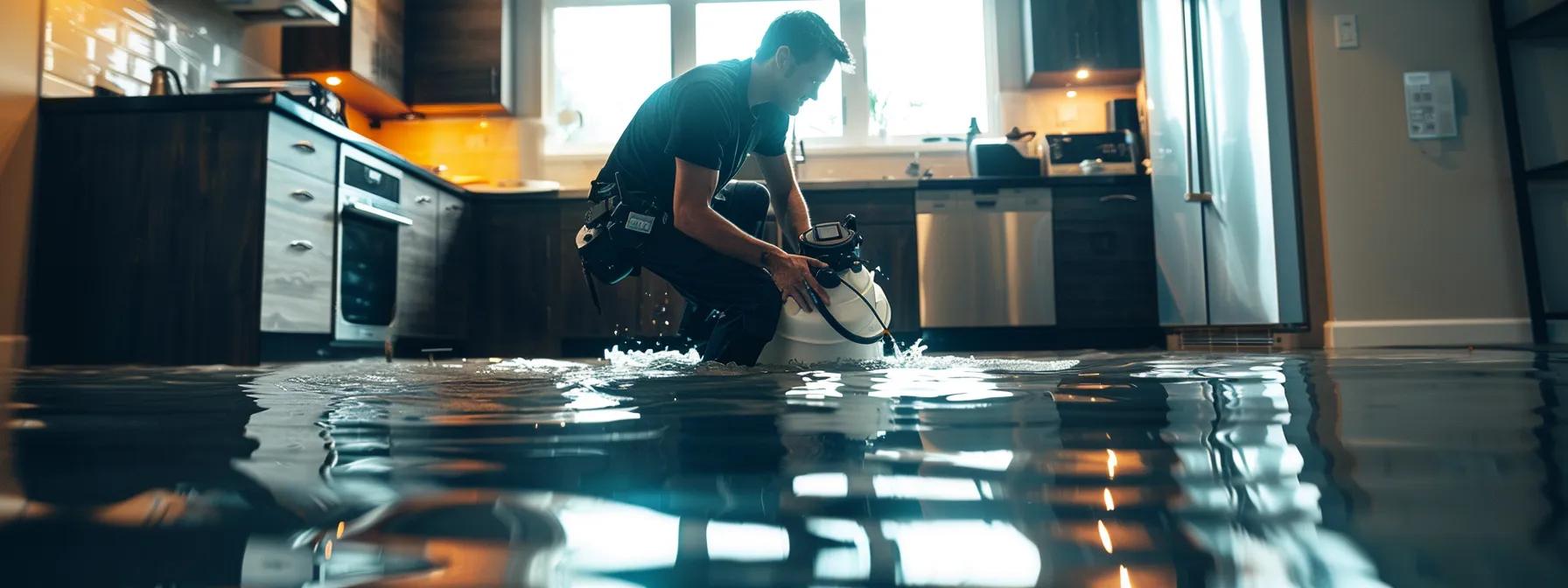
Selecting the appropriate water damage drying equipment is a critical decision that can significantly influence the overall effectiveness and efficiency of the restoration process. The scope and severity of the water intrusion, as well as the types of materials affected, must be thoroughly assessed before deciding whether to rent or purchase specialized equipment. In this context, factors such as the size of the affected area, the type of water (clean, gray, or black), and the contamination level are vital determinants. Restoration professionals often conduct detailed inspections using moisture meters and thermal imaging cameras to decide on the best equipment mix. This careful selection process also involves balancing performance characteristics like sound pressure and airflow with energy efficiency and operational cost.
Assessing the Scope and Severity of the Water Intrusion
Before investing in drying equipment, it is essential to evaluate the extent of the water damage accurately. This assessment involves a detailed survey of the building, including hidden areas such as wall cavities, crawl spaces, and under flooring. The degree of water damage, type of water, and the covering materials (drywall, concrete, wood, carpet) all affect the choice of equipment. In many cases, water damage restoration contractors use moisture meters to obtain precise measurements on each surface. By identifying critical problem areas, professionals can tailor their equipment selection to address both visible water and hidden moisture pockets. Furthermore, the severity of damage dictates the intensity and duration of the drying process, influencing whether standard dehumidifiers or high-capacity industrial models are needed.
Matching Water Damage Drying Tools to the Types of Affected Materials
The performance and suitability of drying equipment can vary significantly based on the types of materials affected by water damage. Porous materials such as drywall and carpet require different treatment compared to non-porous surfaces like tile and concrete. For instance, porous materials are more prone to mold growth and require controlled drying conditions with lower humidity levels. In contrast, non-porous materials may allow for more aggressive drying techniques using heat drying or increased air mover output. Restoration specialists must also consider the sensitivity of certain materials that could be damaged by excessive airflow or heat. By matching the equipment to the specific properties of affected materials, such as using low-noise dehumidifiers for residential areas or high-velocity air movers for commercial spaces, the drying process becomes more efficient and minimizes the risk of secondary damage.
Deciding Between Renting or Purchasing Drying Equipment
The decision to rent or purchase water damage drying equipment depends on factors such as restoration frequency, budget, and facility size. Rental options are typically more cost-effective for one-time or infrequent jobs, while purchasing high-quality, durable machinery may be advantageous for restoration companies that handle multiple projects regularly. Detailed cost-benefit analyses, which take into account initial purchase price, maintenance costs, and recovery rates, help guide these decisions. For homeowners, renting equipment from certified restoration specialists ensures access to state-of-the-art technology without the burden of long-term investment or storage. Restoration contractors often report that owning equipment is beneficial in high-demand markets, as it allows for immediate response and better control over the drying environment. Moreover, the availability of warranties and service contracts plays a critical role in ensuring that the equipment remains effective over time.
Following Industry Standards for Safe and Effective Equipment Use
Compliance with industry standards and guidelines is paramount when selecting and operating water damage drying equipment. Organizations such as the Institute of Inspection, Cleaning and Restoration Certification (IICRC) provide detailed standards for equipment use, safety protocols, and performance benchmarks. Adhering to these standards ensures that the drying process is not only effective but also safe for both technicians and occupants. Equipment calibration, regular maintenance checks, and thorough documentation during the drying process are all practices that align with best industry practices. These protocols help prevent equipment failure, reduce operating costs, and improve overall restoration outcomes. Restoration professionals who follow these industry standards are better equipped to manage the risks associated with water damage, such as electrical hazards, mold proliferation, and structural instability.
Key Takeaways: – A thorough assessment of water damage severity is essential for selecting the right equipment. – Matching tools to affected materials optimizes drying efficiency and minimizes secondary damage. – The decision to rent or purchase equipment should be made based on project frequency, cost-benefit analysis, and availability of service support. – Following established industry standards guarantees safe, effective, and documented drying processes.
Conclusion
In conclusion, effective water damage restoration requires a balanced, strategic use of specialized equipment ranging from water extractors and advanced moisture meters to air movers and dehumidifiers. Each tool plays a critical role: water extractors remove bulk water quickly; air movers accelerate evaporation; and dehumidifiers, whether refrigerant or desiccant, reduce ambient moisture to safe levels. Advanced techniques such as wall cavity and floor mat systems further ensure that hidden moisture does not compromise structural integrity or lead to mold growth. Additionally, selecting the right tools based on the severity of damage, affected materials, and adherence to industry standards is crucial for a successful restoration project.
Homeowners and professionals are encouraged to assess the specific requirements of their water damage scenario and deploy a coordinated drying strategy. Documentation of moisture levels and continuous monitoring are also critical in ensuring a thorough, safe drying process. By integrating these best practices, restoration projects can be completed more efficiently, reducing long-term repair costs and protecting property value. For anyone facing water damage challenges, embracing a well-rounded drying strategy is the key to restoring health and safety to the affected space.
Frequently Asked Questions
Q: What is the primary role of water extractors in water damage restoration? A: Water extractors are designed to remove bulk water from damaged structures rapidly. Their high suction power reduces the water volume, which is crucial for minimizing long-term damage and preparing the area for subsequent drying with air movers and dehumidifiers.
Q: How do air movers enhance the drying process? A: Air movers increase airflow over wet surfaces, accelerating evaporation and dispersing moisture-laden air. Their strategic placement significantly improves the drying rate, ensuring that moisture is removed efficiently from both open areas and confined spaces.
Q: What factors should be considered when selecting a dehumidifier for water damage restoration? A: Key factors include the type of dehumidifier (refrigerant versus desiccant), the size of the affected area, ambient temperature, and the moisture load in the air. Correct sizing and proper integration with air movers ensure optimal performance and energy efficiency.
Q: What advanced tools can be used for drying water in complex or hidden areas? A: Specialized tools such as wall cavity drying systems and floor mat systems address moisture trapped in hard-to-reach areas. Additionally, heat drying equipment and air scrubbers are used to expedite the drying process and maintain indoor air quality.
Q: Why is continuous monitoring important during the restoration process? A: Continuous monitoring using moisture meters, hygrometers, and temperature sensors ensures that all drying equipment is functioning optimally. It allows adjustments in real time to prevent residual moisture and avoid issues like mold growth, ensuring a safe and complete restoration process.
Q: Can I use rental equipment for water damage restoration, or should I purchase professional-grade tools? A: Rental equipment is typically more cost-effective for one-time or short-term projects, while purchasing is better for frequent restoration needs. The decision should be based on the project scope, budget, and long-term restoration plans.
Q: How do industry standards influence equipment selection and usage in water damage restoration? A: Adhering to industry standards, such as those from the IICRC, ensures that the tools are used safely and effectively. This compliance helps maintain high restoration quality, proper documentation, and a safer working environment for professionals and occupants.
Final Thoughts
The equipment used to dry out water damage plays a pivotal role in ensuring a safe and efficient restoration process. From the initial extraction of bulk water to specialized systems for hidden moisture, each tool offers unique benefits that contribute to successful outcomes. Strategic coordination of air movers, dehumidifiers, and advanced drying systems can dramatically reduce restoration times and prevent long-term damage such as mold growth. By understanding and implementing these best practices, both homeowners and professionals can achieve effective water damage restoration that preserves property value and prevents future complications.



